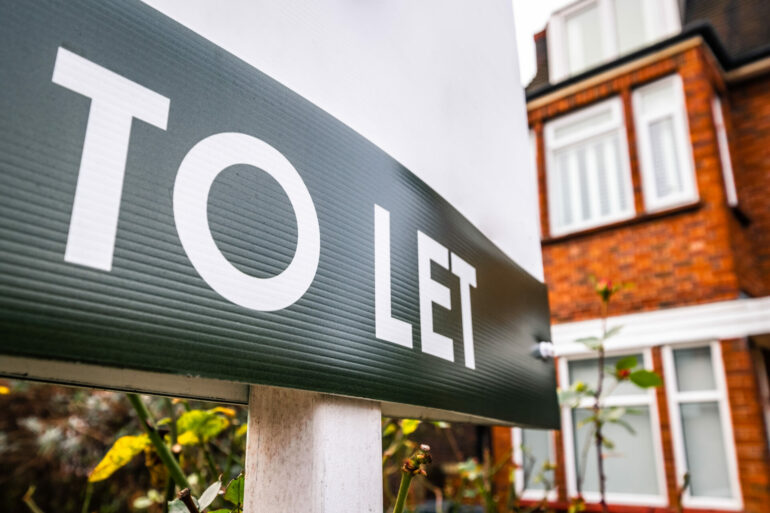Despite the Bank of England’s surprise increase in the base rate last December from 0.1% to 0.25%, the average cost of buy-to-let fixed rate mortgages favoured by landlords has barely budged.
But landlords are being warned this is unlikely to continue if, as expected, the base rate goes up again when the Bank meets for the first time this year on February 3rd, according to online buy-to-let mortgage broker, Property Master, as it releases the findings of its newly designed Buy-to-let Mortgage Tracker.
The Property Master Buy-to-let Mortgage Tracker found that the average rate for a buy-to-let mortgage for a typical loan was as low as 1.69% which, once fees are included, translates into a monthly cost of £262.
This was for a two-year fixed rate loan of £160,000 representing 60% of the value of the property. As expected, buy-to-let mortgages with a Standard Variable Rate (SVR) were shown to be the most expensive.
The average buy-to-let SVR was 4.77% – up slightly (by 0.03%) on the cost before the recent rise in the Bank’s base rate although a number of lenders have announced increases in their SVR’s from February 1st.
This does mean landlords currently sticking with a Standard Variable Rate are paying around £596 per month, up to £334 a month more than if they switched to the average cheapest fixed rate mortgage. Lenders will typically increase their Standard Variable Rate quickly in response to any rate rise from the Bank of England.
Commenting on its Buy-to-let Mortgage Tracker, Angus Stewart, chief executive of Property Master, said: “The buy-to-let mortgage market is a dynamic one and yet again we have seen how this competition has helped to some extent cushion landlords from the increased costs you would expect to see from a rise in bank base rate, at least for landlords on fixed rates.
“The question is for how much longer given that the expectation is growing the Bank will move again in the first week of February. This could very well be a small window for landlords to bag a good rate before the market moves more decisively into a rising interest rate environment.”
He continued: “What we can say with certainty is the availability of low buy-to-let mortgage rates has to a large extent obscured the pressures on landlords operating in the private rented sector. The increasing cost of regulation, higher taxes and the removal of various tax benefits has been able to happen to very little affect whilst finance costs remained low. If this changes it will hit landlords hard, and we may well see at least the smaller ones deciding buy-to-let is no longer a sensible investment for them.”
The findings form part of the research from online buy-to-let mortgage broker, Property Master as it kicked off its newly designed Buy-to-let Mortgage Tracker designed to show changes in the cost of a wide range of mortgages typically taken out by landlords. The Tracker follows some 30 lenders who constitute around 75% of total buy-to-let mortgage lending. It will report every month.
The Buy-to-let Mortgage Tracker also tracks the cost of buy-to-let mortgages taken out by landlords through a limited company as opposed to those taken out by private individual landlords and the cost of HMO (House in Multiple Occupation) mortgages and those mortgages taken out by landlords buying holiday lets.
The average cost of a typical 2-year fixed rate mortgage for a landlord borrowing through a limited company rather than as a private individual was 0.11% more on the interest rate charged and £54 on the monthly cost.
This differential is calculated on a loan-to-value (LTV) of 60% and a loan of £160,000 and again includes the cost of fees averaged out over the term of the fixed rate.
Fees for limited company mortgages are typically higher than for private individuals. For a 5-year fixed rate mortgage for the same amount, the differential was 0.49% more on the interest rate and £80 on the monthly cost, including fees.
The average 2-year fixed rate mortgage for an LTV of 60% for a loan of £160,000 to purchase an HMO was 3.80% which translated into a monthly cost with fees of £562.
For a 5-year fixed rate mortgage this same purchase would cost 4.49% translating into a comparable monthly cost of £646. The higher cost of borrowing to buy an HMO can be seen as a reflection of the higher risk lenders believe these purchases represent.
Similarly with holiday lets where lenders price in the property being empty outside of the holiday season the average 2-year fixed rate mortgage for an LTV of 60% for a loan of £160,000 was 3.52% with a monthly cost of £507 including fees and the same loan but over five years charged a rate of 3.75% with a monthly cost of £520 again including fees.




